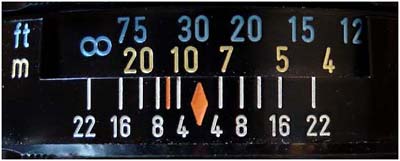I have been asked a few times, which strong UV source I would recommend for reflected UV photography. Well, since UV LEDs are getting more and more common now, even the Nichia 365nm NSCU033A is now availble as a torch, here a test which might be helpful.
Test done under identical conditions, ISO400, f5.6, 41mm quartz fluorite lens.
[click on image to see a larger one]
1) Xenon UV enhanced studio flash @400Ws, 1/160sec:

2) 3x UV LED torches (365nm, 390nm, 405nm), 15 sec painting with light:

3) Nichia 365nm NCSU033A P6 torch, 15 sec painting with light:

4) "Spiderfire" 390nm UV Led torch, 15 sec painting with light:

5) "Ultrafire" 405nm UV Led torch, 15 sec painting with light:

I tried to get as close as possible to the Xenon result, as that one covers the Baader U-filter bandpass 310-390nm the best, due to its even spectral distribution. In #2 I tried to simulate that by using three UV Leds in parallel (a bit hard to handle and evenly target, three torches in one hand).
No wonder actually, that the 405nm UV Led torch does not bring out the UV pattern as well as the others. The 390nm works acceptably well, although parts of its energy is being cut off by the filter already and the 365nm Nichia does pretty well considering, but the result looks rather monochromatic.
So there is nothing better than Xenon (or sunlight of course), but the 365nm or 390nm comes quite close, but at much longer exposure times. And I have not even talked about the prices of these torches...
A practical aspect:
UV torches are very easy to use, can easily be hotshoe mounted but need rel. long exposure times, so not suited for moving objects or if wind is present where shorter exposure times would benficial. For inside or studio work, they are easy to use and tehlonger exposure times can be even helpful if painting with light is desired.
Xenon flashes are bulky and heavy, need to be modified for suitable UV output (partly removal of the UV blocking gold layer on the Xenon tube, removal of UV blocking Fresnel platic front covers etc.). Candidates being Nikon SB-14, Metz 45CT series (high voltage trigger, safesync needed), Vivitar 283 (some have high voltage trigger, safesync needed, check with multimeter), Vivitar 285HV (have safe trigger voltage around 8Volts). Advantage is the high UV content, but downside is that painting with light is not possible, but choosing longer exposure times and firing multiple flashes is. Xenon flashes have a high IR content, so in some cases a suppressing IR filter (but UV transmissive) might be needed in front of the Xenon flash (such as Schott BG38 or 39 or 40, 40 works best). For inside or studio work, Xenon is still the best source to use IMHO, as it allows UV, VIS and IR as well as multispectral work, since the Xenon spectrum is very wide and even. There is even an expensive Quantum flash for UV, which also allows to mount filters into the reflector front (QF80). No mod. is needed for that one (and the very rare Nikon SB-140 btw. which sometimes comes up on the used market as it is no longer made), but it comes at a steep price.
Stay tuned, more will follow on that fascinating subject...
More info on this very interesting field may be found on my site
http://www.pbase.com/kds315/uv_photos




















































